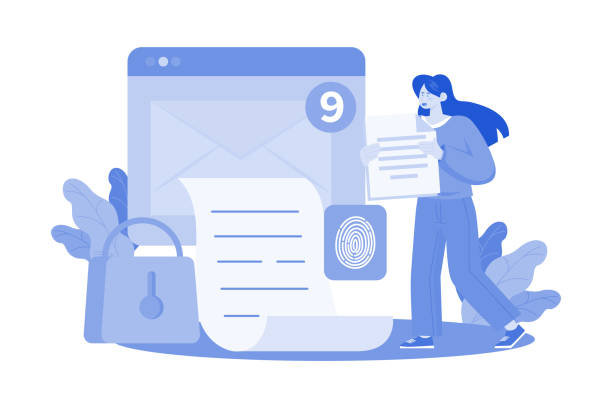An Introduction to Secure Website Design and Its Necessity

In today’s digital age, where businesses, organizations, and even individuals heavily rely on the online space for communication, e-commerce, and information sharing, the concept of #Secure_Website_Design has become a vital backbone.
One can no longer imagine developing a website without considering comprehensive security measures.
An insecure website can lead to major disasters, from unauthorized access to sensitive user information to loss of brand reputation and heavy financial damages.
Imagine an e-commerce website where customers’ bank card information is stolen; this not only causes direct financial loss to customers but also irrevocably damages their trust.
Therefore, secure website design is not merely a choice, but a strategic necessity for preserving privacy, credibility, and operational stability of any online entity.
This issue goes beyond simply installing an SSL certificate; it encompasses a comprehensive approach to security at all stages of the software development lifecycle, from initial planning to continuous maintenance.
The main goal of secure website design is to mitigate risks that could harm a website and its users, ensuring that its data and functionalities remain protected.
Neglecting this issue can have severe consequences.
Disappointed by your e-commerce website’s low conversion rate? Rasawab transforms your online store into a powerful tool for attracting and converting customers!
✅ Significant increase in visitor-to-buyer conversion rate
✅ Unparalleled user experience to boost customer satisfaction and loyalty⚡ Get a free consultation from Rasawab!
The Most Common Web Security Threats and How to Identify Them
![]()
Understanding #Web_Security_Threats is the first step towards secure website design.
Cyber attackers are constantly devising new methods to infiltrate systems, but some attacks remain the most common and destructive.
#SQL_Injection attacks allow attackers to manipulate a website’s database by injecting malicious code into input forms, extracting or even deleting sensitive information.
#XSS or Cross-Site Scripting attacks, which occur by injecting malicious scripts into web pages, enable attackers to steal user cookies or hijack their sessions.
#CSRF or Cross-Site Request Forgery attacks compel authenticated users to perform unwanted actions.
Furthermore, Broken Authentication, such as improper session management or weak passwords, can open doors for unauthorized access.
Also, Insecure Direct Object References allow attackers to access resources they should not have by directly changing URL parameters.
Understanding these vulnerabilities is crucial for any developer aiming for secure website design.
Tools such as web vulnerability scanners (like OWASP ZAP or Burp Suite) can help identify these weaknesses, and periodic penetration testing is also essential for discovering hidden vulnerabilities.
The Role of SSL/TLS Certificates in Secure Website Design

Among various #Web_Security measures, #SSL_TLS certificates hold a special place and are considered fundamental elements of secure website design.
SSL (Secure Sockets Layer) and its successor TLS (Transport Layer Security) are protocols that ensure a secure connection between a web browser and a web server.
Their main task is data encryption during transmission, meaning that any information exchanged between the user and the server (such as login credentials, credit card details) is sent in an encoded form and will be unintelligible to third parties.
This prevents ‘Man-in-the-Middle’ attacks.
In addition to encryption, SSL/TLS certificates also verify the server’s identity.
This means users can be confident that they are genuinely communicating with the website they intend to visit, and not with a fake website created by an attacker.
There are different types of certificates: DV (Domain Validation), which only validates the domain; OV (Organization Validation), which validates the organization’s identity in addition to the domain; and EV (Extended Validation), which offers the highest level of validation and displays the organization’s name in green in the browser’s address bar.
The choice of certificate type depends on the website’s security needs and type of activity.
Proper installation and configuration of SSL/TLS is a fundamental and indispensable step in secure website design and significantly contributes to increasing user trust and improving SEO ranking.
| SSL/TLS Certificate Type | Validation Level | Use Cases |
|---|---|---|
| DV (Domain Validation) | Domain ownership validation | Blogs, personal websites, small businesses |
| OV (Organization Validation) | Domain ownership and organization identity validation | Companies, commercial websites, government organizations |
| EV (Extended Validation) | Highest level of organization identity validation (green bar) | Banks, large e-commerce websites, financial organizations |
Principles of Secure Programming for Websites
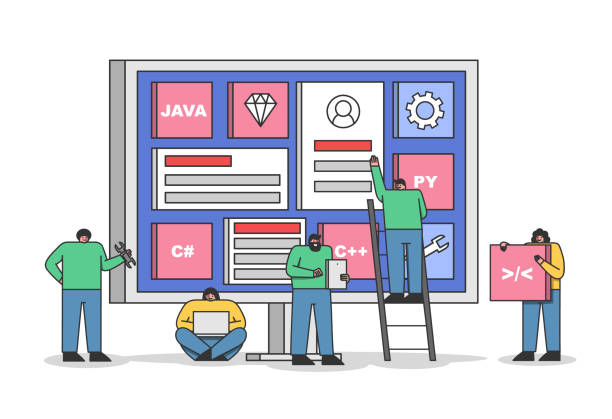
The core of any secure website design is secure coding.
Even with the best infrastructures and firewalls, if the programming codes have vulnerabilities, the website will still be at risk.
#Secure_programming is a preventive approach where developers incorporate security principles from the outset, at every stage of coding.
One of the most important principles is Input Validation.
Any data received from users must be carefully checked and sanitized to prevent the injection of malicious code or invalid data.
Using Prepared Statements in database interactions is an effective solution to prevent SQL Injection attacks.
Also, Output Encoding is essential to prevent XSS attacks; this means that data sent to the user’s browser must be encoded in such a way that it is not recognized as executable code.
The Principle of Least Privilege also dictates that every part of an application or every user should only have access to the minimum resources and permissions necessary to perform their function.
Using reputable security frameworks with built-in security mechanisms (such as Laravel for PHP or Django for Python) can greatly facilitate the secure website design process and prevent many common mistakes.
Furthermore, one should never blindly trust user data; any data entering the system from external sources has the potential to be malicious.
Are you falling behind in the competition with large online stores?
Rasawab, with professional e-commerce website design, brings your business online and increases your market share!
✅ Increased brand credibility and customer trust
✅ Easy shopping experience leading to more sales
⚡ Get a free website design consultation right now!
Database Security: The Backbone of Every Website
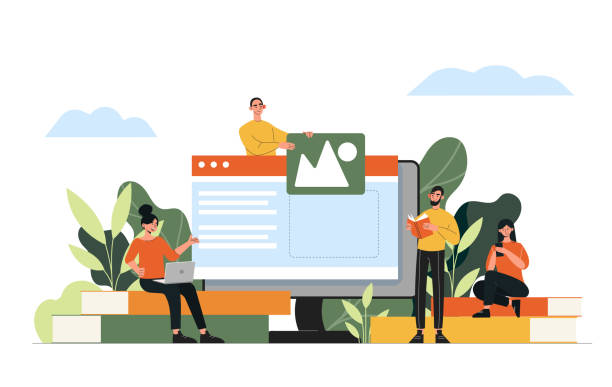
The database is the heart of every dynamic website and the primary repository of its vital information.
From user information and financial transactions to site content, everything is stored in the database.
Therefore, #Database_Security is of particular importance in secure website design, and any breach can be catastrophic.
The first step in securing a database is using strong and unique passwords for database user accounts.
These passwords must be changed regularly and have sufficient complexity.
The Principle of Least Privilege, mentioned earlier, also applies here; users and applications should only have access to the tables and operations they need to perform their tasks, and no more.
Encrypting sensitive data in the database, especially Personal Identifiable Information (PII) or financial information, creates an additional layer of protection, so even if an attacker manages to access the database, the data will be meaningless to them.
Also, ensuring that the database software is always up-to-date and all security patches have been applied is crucial; older versions often have known vulnerabilities that attackers can exploit.
Regular and off-site backups of the database are a vital strategy for rapid recovery after any attack or failure.
These measures collectively contribute to the stability and data protection in line with secure website design.
Strong Authentication and Access Control Systems
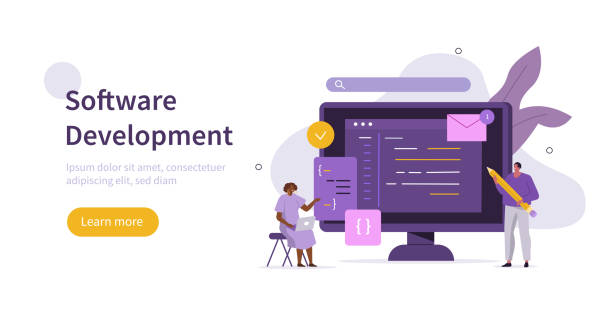
One of the main entry points for attackers are weak authentication and access control systems.
A #Secure_Website_Design should never overlook this aspect.
Strong authentication ensures that only authorized users can access the website.
Implementing Multi-Factor Authentication (MFA), which typically involves something the user knows (password), something the user has (mobile phone for a one-time code), and/or something the user is (fingerprint), is highly recommended.
This adds a significant layer of security and makes brute-force attacks or password theft much more difficult.
Strong password policies, including requiring uppercase and lowercase letters, numbers, symbols, and a minimum length, are also essential.
Securely hashing passwords (using strong algorithms like bcrypt or Argon2) instead of storing them as plain text is another vital principle.
Access Control (Authorization) is equally important; this system determines what resources each user can access and what operations they can perform after authentication.
Implementing Role-Based Access Control (RBAC) ensures that users only have access to the data and functions required for their specific role.
Proper session management, including session expiration after a period of inactivity and the use of secure session tokens, is another important measure in secure website design to prevent session hijacking.
Countering DDoS Attacks and the Role of Web Application Firewalls (WAFs)

#DDoS or Distributed Denial of Service attacks are among the most destructive types of cyber attacks, aimed at taking a website offline by sending a massive volume of fake traffic.
These attacks can lead to service disruption, revenue loss, and damage to reputation.
Countering DDoS requires multi-layered strategies.
Using Content Delivery Networks (CDNs) like Cloudflare or Akamai, which distribute traffic from various parts of the world and can filter malicious traffic, is one of the best ways to defend against DDoS.
However, CDNs are only one aspect of #Secure_Website_Design.
Web Application Firewalls (WAFs) play a complementary and crucial role.
A WAF is a firewall that monitors, filters, and blocks HTTP/HTTPS traffic between a web application and the internet.
WAFs can identify and block attacks such as SQL Injection, XSS, CSRF, and other Layer 7 (application layer) vulnerabilities, which traditional network firewalls are unable to do.
WAFs can be implemented as hardware, software, or cloud-based solutions.
They operate using a set of rules (policies) that define common attacks and can filter traffic based on IP addresses, attack signatures, or even abnormal request behavior.
Implementing a WAF as part of a comprehensive secure website design strategy provides a powerful defense layer against a wide range of cyber attacks, protecting website data and functionality even before software vulnerabilities are discovered or patched.
| Type of Web Attack | Description | How WAF Counters It |
|---|---|---|
| SQL Injection | Injecting SQL code into inputs to manipulate the database. | Identifying and blocking malicious SQL queries. |
| Cross-Site Scripting (XSS) | Injecting malicious scripts into web pages that are executed by the user’s browser. | Filtering potentially malicious scripts in inputs and outputs. |
| Cross-Site Request Forgery (CSRF) | Tricking authenticated users into performing unwanted actions. | Checking CSRF tokens and blocking requests without valid tokens. |
| DDoS (Layer 7) | Sending a large volume of HTTP/HTTPS requests to overwhelm the server. | Analyzing traffic patterns, identifying and blocking malicious bots. |
Regular Security Audits and Essential Updates

Secure website design is not a one-time process, but a continuous cycle.
Even after implementing the best security practices, #Regular_Security_Audits and essential updates are needed to maintain the website’s security posture.
Cyber threats are constantly evolving, and new vulnerabilities are being discovered.
Therefore, regular vulnerability scans using automated tools can help identify known weaknesses.
Beyond automated scans, #Penetration_Testing, conducted by security professionals, simulates real attacks to discover vulnerabilities that automated tools might miss.
Code Review is also a vital practice where developers manually examine each other’s code to find security or logical bugs.
Most importantly, keeping software up-to-date is crucial.
This includes the server operating system, web server (such as Apache or Nginx), programming language, frameworks, CMS (like WordPress, Joomla), and all plugins and libraries used.
Any delay in applying security patches can leave a website vulnerable to known attacks.
This proactive and continuous approach to security maintenance ensures that your secure website design remains resilient against new threats.
Are you losing customers due to your e-commerce website’s outdated appearance or slow speed? Rasawab’s expert team solves these problems with professional e-commerce website design!
✅ Increased customer trust and brand credibility for you
✅ Blazing speed and excellent user experience
Get a free consultation with Rasawab right now ⚡
Planning for Incident Response and Data Recovery
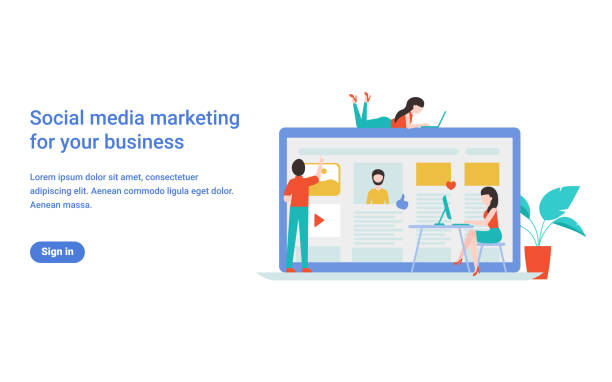
Even with the best security measures and a secure website design, the likelihood of security incidents is not entirely zero.
For this reason, having a comprehensive and well-documented #Incident_Response_Plan is of vital importance.
This plan helps organizations respond quickly and effectively in the event of a cyber attack to minimize damages and accelerate the recovery process.
An incident response plan includes key stages: Identification, which involves detecting the occurrence and type of attack; Containment, aimed at preventing the spread of the attack and isolating affected sections; Eradication, which involves completely removing the attack vector from systems; Recovery, which focuses on restoring systems and data to a normal and operational state; and Post-Incident Analysis, which involves examining the causes of the incident and learning lessons to prevent its recurrence in the future.
Another critical part is #Data_Recovery and #Regular_Backup.
Periodic backups and storing them in secure locations separate from the main server provide the ability to revert to a healthy version of the website and data in case of loss or destruction.
This preparedness is an indispensable component of any secure website design and a responsible action to protect the business and its users.
The Future of Secure Website Design and Upcoming Challenges

The world of cybersecurity is changing at a dizzying pace, and these changes bring new challenges for #Secure_Website_Design.
In the future, we will witness the evolution of threats into more complex and intelligent methods.
AI-powered attacks, which can perform more personalized phishing attacks or smarter malware attacks, will pose a significant challenge.
#Quantum_computing is also on the horizon and could render current encryption algorithms obsolete, necessitating the development of new encryption methods (Post-Quantum Cryptography).
Supply Chain Attacks, where attackers target software or libraries used by websites, are also on the rise.
In response to these challenges, new approaches to #Secure_Website_Design are emerging.
The ‘Zero Trust Architecture’, which never trusts any user or device, whether inside or outside the network, and verifies everything, will become a guiding principle.
Security Automation, using AI and machine learning, can help in faster detection and response to threats at scale.
For professionals in this field, continuous learning and staying updated with the latest technologies and threats are essential.
How can we leverage emerging technologies like AI to strengthen our cyber defenses, rather than just defending against them? These questions will be at the forefront of future discussions in the field of web security and secure website design, requiring innovative thinking and international collaboration.
Frequently Asked Questions
| Question | Answer |
|---|---|
| 1. What does secure website design mean? | Secure website design means creating a website that is resistant to cyber attacks and protects user and server information. |
| 2. Why is security important in website design? | To prevent data breaches, protect user privacy, maintain user trust, and avoid financial and reputational losses. |
| 3. What are the most common web vulnerabilities? | SQL Injection, Cross-Site Scripting (XSS), Cross-Site Request Forgery (CSRF), Broken Authentication, and Security Misconfiguration. |
| 4. How can SQL Injection be prevented? | By using Prepared Statements / Parameterized Queries, ORMs, and Input Validation. |
| 5. What is the role of HTTPS and SSL/TLS in website security? | HTTPS uses the SSL/TLS protocol to encrypt communication between the user’s browser and the server, preventing eavesdropping and data tampering. |
| 6. What measures should be taken to prevent XSS attacks? | Input validation, Output Encoding to prevent malicious code execution, and using Content Security Policy (CSP). |
| 7. What does a strong password policy include? | Enforcing long passwords, a combination of uppercase and lowercase letters, numbers, and special characters, and preventing reuse. |
| 8. How does Two-Factor Authentication (2FA) help with security? | Even if a user’s password is compromised, the attacker cannot log in without access to the second authentication factor (such as an SMS code or an app). |
| 9. What is a Web Application Firewall (WAF) and what is its use? | A WAF is a firewall that monitors and filters HTTP traffic between a web application and the internet to prevent common web attacks such as SQL Injection and XSS. |
| 10. Why are regular updates of software and libraries important? | Updates often include security patches to fix discovered vulnerabilities. Failure to update can expose the site to new attacks. |
And other services of Rasawab Advertising Agency in the field of advertising
Smart Brand Identity: A combination of creativity and technology to increase click-through rates by customizing user experience.
Smart Website Development: A combination of creativity and technology for analyzing customer behavior by optimizing key pages.
Smart Custom Software: A new service to increase user engagement through SEO-driven content strategy.
Smart Direct Marketing: A combination of creativity and technology for customer acquisition through intelligent data analysis.
Smart Social Media: A creative platform to improve click-through rate increase with precise audience targeting.
And over a hundred other services in the field of internet advertising, advertising consulting, and organizational solutions
Internet Advertising | Advertising Strategy | Advertorial
Resources
Website Security in Today’s WorldImportance of Secure Website DesignArticle: The Importance of Website SecurityTechnology and Security in Website Design
? Are you ready to take your business to new heights in the digital world? Rasawab Afarin Digital Marketing Agency, with years of experience and a specialized team, offers comprehensive and results-driven solutions for your brand’s growth and visibility. From responsive website design and SEO to social media management and targeted advertising campaigns, we are with you every step of the way to turn your digital dreams into reality. With Rasawab Afarin, the bright future of your business begins today.
📍 Tehran, Mirdamad Street, next to Bank Markazi, Kazerun Jonubi Alley, Ramin Alley, No. 6

